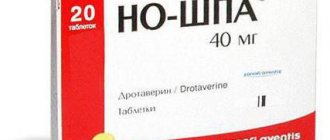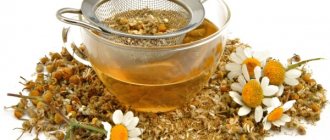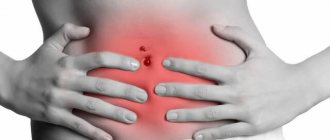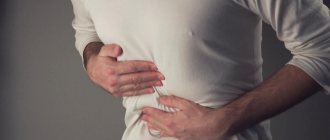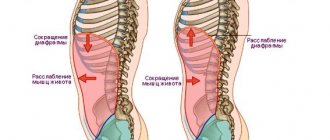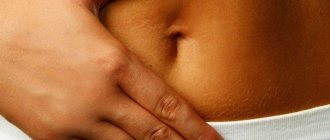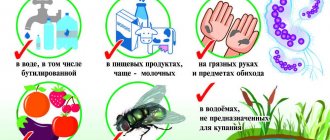One of the common reasons for visiting a medical facility or calling emergency services at home is pain above the navel. This symptom does not allow a quick diagnosis and requires additional assessment of body functions. It may be associated with the development of pathologies of several internal organs or indicate temporary and non-hazardous processes for health, and therefore life. You should find out why your stomach may hurt, what signs complement the picture of diseases, and what to do when they appear.
What organs are located in the area above the navel?
To understand why the stomach hurts above the navel, you need to clarify which internal organs are located in this area and above (this place has other names - upper abdomen, epigastrium, epigastrium) or near it. The list is quite large :
- stomach, its part corresponding to about a third of the organ;
- one of the lobes of the liver;
- gallbladder with its ducts;
- pancreas;
- partially the kidneys (their top);
- spleen;
- cardiac pericardium;
- sections of the intestine - part of the duodenum, the transition from it to the jejunum;
- areas of large vessels - vena cava, abdominal aorta;
- nerve endings that form the celiac plexus.
© shutterstock
Human anatomy suggests that pain above the navel can result from a number of serious dysfunctions of any of the organs located in the named area of the body or slightly above it. Therefore, such a signal from the body cannot be ignored. It is necessary to accurately determine the causes of pain above the navel, and accurately follow all the doctor’s instructions during the treatment period.
Do's and Don'ts
If the doctor has determined that the causes of discomfort are characterized by an emotional state, then simple methods can be used to relieve it.
You need to lie down and relax, with the doctor’s permission, use “No-shpa” and other means that will relieve pain.
If you overeat, you can use activated carbon and other adsorbents, which will reduce pain in the navel area. If the pain does not stop within 3-4 hours, you need to go to the hospital.
Pain that appears as a result of malfunctions in the body can be muffled by applying bed rest, proper nutrition, and also large consumption of water.
There are other rules that also need to be followed, because you can’t always help yourself and the body on your own, so as not to harm.
While the reasons are unknown, the following is prohibited:
- When calling an ambulance and before its visit, it is prohibited to use medications that relieve pain. Using painkillers, the patient will not be able to explain how and what exactly hurts, in what area. Accordingly, the physician will not understand where localization occurs and what measures to take.
- Do not heat or cool the abdominal area.
- It is prohibited to use enemas in any form or manifestation.
- It is better to refuse food and water. If your mouth is very dry, you can drink, but in very small quantities, no more than a couple of sips.
By adhering to such rules, the doctor will be able to quickly find the causes and eliminate the pain.
Gastritis
Pain above the navel is one of the accompanying gastritis. It is characterized as acute, paroxysmal, often accompanies the patient for a long period of time and does not go away on its own. The stomach hurts above the navel with gastritis immediately after eating food and in cases of a long break between each meal. The picture of the disease is complemented by periodic heartburn, vomiting (observed directly during eating), belching, a feeling of sour taste in the mouth, increased salivation, and disruption of intestinal function. Pain above the navel in such situations is accompanied by a feeling of weakness, increased sweating, changes in heart rate, a slight increase in the patient's temperature, and a lack of desire to eat.
© shutterstock
The pain above the navel that accompanies gastritis becomes less pronounced or disappears after a course of therapy. The patient is recommended to switch to dietary nutrition, he is prescribed complex treatment - antibiotics, drugs to reduce the secretion of gastric juice, coatings, painkillers, enzymes and cytoprotectors.
Diagnosis
Diagnosing discomfort in the navel area is not an easy task, even for a doctor with extensive experience. This is due to the fact that the description of the syndromes and their sensation are different.
Not every patient can describe the nature of the pain, due to which the doctor cannot determine the causes of their occurrence.
To accurately determine diseases, the patient undergoes a diagnostic course:
- A general blood test is given.
- A tomography is performed.
- They do an ultrasound.
- If necessary, a biopsy is possible.
- The doctor prescribes a gastroscopy.
- Other examinations are carried out as necessary.
Of course, you may not need to go through the entire list of diagnostics; it all depends on the specific case.
During gastritis, the mucous membrane in the abdomen is affected, after which pain appears. After a certain time, the sensations intensify, and the person’s condition worsens.
Everything inside burns, and in severe situations bleeding may appear, which is very difficult to determine.
If during bleeding the blood does not reach the intestines, then it will not be possible to immediately determine the problem from the stool. Feces with internal bleeding are liquid and black.
If such a manifestation occurs, it is necessary to urgently seek medical help.
Ulcerative processes
A person has pain above the navel in the abdomen due to gastric and duodenal ulcers. He can describe the manifestations of pain like this :
- arise in the epigastrium, can radiate to the lumbar region, chest, back, descend low or rise from the initial focus;
- sensations often appear at night;
- soreness refers to “hungry”, that is, it becomes bright a few hours after eating;
- may appear at other times - early (an hour later) or late (two hours later) after feeding;
- A characteristic sign of pain in the area above the navel is its seasonality.
© shutterstock
Nausea, vomiting, complete reluctance to eat, painful appearance, thinness are additional signs indicating the development of an ulcerative process in the digestive system. The choice of treatment for the disease depends on the development of the pathology; it can be medicinal or surgical.
Nature of pain
Their character can tell a lot about the possible causes of pain.
Acute pain syndrome
Acute pain, which quickly appears and grows, deserves special attention. Sharp pain in the epigastrium, similar to a stab with a dagger, is considered a characteristic sign of perforation of a stomach or duodenal ulcer. In this case, pronounced muscle tension of the anterior abdominal wall is observed.
With intestinal obstruction, cramps and colic appear in the abdomen. Usually they are localized not only in the upper sections, but throughout the entire abdominal cavity. Flatulence, impaired passage of gases and feces, and vomiting are also observed.
With thrombosis of the vessels supplying the digestive tract, the pain is intense, colicky, diffuse. Tension of the abdominal muscles is detected, fever may develop and black stools may appear.
With dissecting aortic aneurysm, pain in the upper abdomen is observed in 25% of cases. It is intense, constant, cannot be relieved by antispasmodics and analgesics, and radiates to the back. Sometimes in the epigastric region, slightly to the left of the center, you can feel a pulsating formation. Aortic aneurysm is accompanied by a persistent increase in blood pressure.
Biliary colic is associated with the movement of a stone in the cavity of the gallbladder or cystic duct, with a violation of the outflow of bile. It develops acutely, after eating fatty foods or against the background of a bumpy ride, and lasts from a quarter of an hour to 6 hours. Most often, the patient can clearly point to a painful point on the border with the right costal arch. Sometimes jaundice, nausea and vomiting develop against this background.
Rupture and infarction of the spleen are accompanied by acute pain in the left hypochondrium and below, which radiates to the left shoulder.
Note. Abdominal pain in children has some characteristics. In particular, with the development of acute appendicitis, discomfort is first localized in the epigastrium and near the navel. Only after a few hours the pain shifts to the right lower abdomen.
Chronic pain
Chronic pain in diseases of different organs is often similar to each other, especially when it is mild. Let's consider the most typical variants of pain syndrome in different conditions.
Gastritis is characterized by burning or dull pain in the epigastrium and left hypochondrium after eating. In the presence of esophageal reflux, the burning sensation moves behind the sternum. Pain in the epigastric region on an empty stomach is more typical for peptic ulcer disease. If the ulcer is located in the duodenum, then discomfort is also observed in the right hypochondrium.
Cholecystitis manifests itself as clearly localized pain in the right hypochondrium, at the very edge of the ribs. Unpleasant sensations occur after eating and are often accompanied by nausea.
With hepatitis, pain rarely occurs, only with significant enlargement of the liver. Its capsule stretches, and a dull aching pain appears under the ribs on the right. In such cases, the liver may even visually protrude from under the costal arch.
Against the background of pancreatitis, patients often report girdling pain, nausea, repeated vomiting, and diarrhea.
The pain with irritable bowel syndrome and enterocolitis is stabbing, diffuse, affects several parts of the abdomen at once, and is accompanied by diarrhea or constipation.
Oncological diseases of the stomach
The reason why the abdomen hurts above the navel may be stomach cancer. At first, the problem is barely noticeable, then, over a short period of time (several weeks), it becomes pronounced and stable.
© shutterstock
Patients determine pain in the navel area during the development of an oncological process based on several properties. They can differ significantly in each specific case, and have individual characteristics :
- the abdomen in the navel area aches, the pain is not intense;
- the pain becomes sharp, stabbing in nature, its occurrence is not associated with the digestion process, and can occur above the navel at any time of the day;
- the area around the navel and above hurts acutely and constantly, sometimes there are short periods of respite.
For all patients with stomach pain above the navel due to stomach cancer, the doctor prescribes medications to relieve and alleviate the symptom. The medicine should be used regularly, and not just at a time when symptoms intensify. To control abdominal pain above the navel, the doctor prescribes several painkillers to take at the same time.
Causes of pain
There are a lot of nerve endings inside a person, due to which any change in the body quickly manifests itself.
For example, the gastrointestinal tract will quickly respond to low-quality food products, bad habits and other factors.
Pain that appears in the navel area and above it indicates defects in the internal organs that exist precisely in that part of the abdomen.
The main causes in men and women that indicate diseases include:
- Acute gastritis. This disease is accompanied by pain in the abdomen above the navel. Additional sensations include nausea, weakness, diarrhea and vomiting. The patient's mouth dries out, a gray coating appears, and the mucous membrane inside the mouth becomes pale.
- Stomach cancer. All symptoms at the initial stage are similar to those of gastritis. In case of complications, the patient develops an aversion to food; when swallowing food, there is severe pain in the abdomen. A feeling of fullness begins in the left side of the abdomen. The patient quickly loses weight, and apathy towards his condition appears.
- Ulcer. The pain is quite severe only in the morning before eating. In some cases, patients get up at night to eat a little food and relieve pain in the abdomen above the navel, as well as take painkillers. The stomach does not hurt if there are foods in it.
- Pancreatitis. The pain appears above the navel, but is localized on the right side, with inflammation of the head of the pancreas. Pain above the navel on the left indicates damage to the “tail” of the pancreas. When sensations appear in the middle above the navel, the middle part (body) of the pancreas is painful. Additional diarrhea, improper digestion of food, as well as feces with mucus are possible.
- Duodenitis. When the disease occurs, the pain is dull and appears more often after eating. Additionally, the stomach bloats. When you press on the area where the pain is located, it becomes stronger.
- Gastroduodenitis. The stomach hurts just above the navel in the form of contractions, after which it radiates to the right side. The syndrome occurs 2 hours after eating, and the discomfort goes away immediately after consuming food or after using medications or antacids. The patient is still nauseous and his stomach is swollen.
- Hernia. During an umbilical hernia, the stomach hurts a lot. Additional manifestations include nausea, vomiting, rapid pulse and change in stool. On palpation, a round formation appears in the navel area, and if it hurts, you must immediately call an ambulance. More often the problem occurs in men.
- Enteritis. Damage to the small intestine. Pathology appears as a result of various reasons. The pain is aching, dull in the navel area, additionally the person feels nauseous and bursts. The pain appears in the evening, more often after eating. Additional symptoms include dry skin, brittle hair and nails, severe fatigue, and in some cases bleeding from the gums.
- Volvulus. The pain manifests itself in the form of contractions above the navel; after a while, the aching pain turns into a strong, sharp one. If the pain intensifies, you need to call an ambulance.
- Diverticulitis. In addition to the pain above the navel, the temperature also increases, and touching the left side of the abdomen is very painful.
In addition to the diseases described, a person may experience pain for other reasons that are not related to stomach pathologies. We are talking about an inflammatory process, namely appendicitis.
The pain can be severe or mild, starting in the center of the abdomen and above the navel, after which it is localized to the lower right side.
Appendicitis occurs at different ages, in both men and women. The abdominal muscles are constantly under tension, and the discomfort becomes stronger with loads or sudden maneuvers.
Despite the problems described, pain above the navel does not always mean gastrointestinal disease.
Such manifestations may be the result of eating large amounts of food, especially if it was fatty or fried.
The stomach is unable to digest food, and aching pain appears. In this case, the human body is able to cope with the problem itself, and the functioning of the internal organs quickly returns to normal.
If the pain bothers you constantly and does not stop, then, naturally, you need the help of competent people. Many people have a question: what to do to relieve pain?
To improve the condition, you can take up to 2 No-shpa tablets, but self-treatment is prohibited. The doctor must diagnose the patient and prescribe proper treatment.
Duodenitis and gastroduodenitis
Inflammation of the mucous membrane of the duodenum is called duodenitis. If the process also affects the stomach, the patient is diagnosed with gastroduodenitis. The diseases are characterized by largely similar manifestations. The symptom is no exception - pain just above the navel. Patients describe its features :
- most often occurs on the right side of the navel;
- feels dull and aching in the hypochondrium area;
- when the process worsens, it is first observed above the navel in the center, the area where the duodenum is located hurts;
- The duration of the vivid manifestation of the symptom is up to 10 days, then a period of remission is observed.
© shutterstock
Pain above the navel in patients occurs with the development of a chronic form of the disease; it is nocturnal and “hungry” in nature. If duodenitis and gastroduodenitis develops in a child, the process is not always associated with pain.
The manifestations of pain are reduced in special positions of the person’s body - if he turns over on his left side, squats or lies “in a ball”, bringing his knees and elbows as close as possible. You can reduce the appearance of the symptom by switching to a diet and if you start taking medications. As prescribed by a doctor, it is necessary to use antispasmodics and painkillers, antacids, and sorbents.
Causes of pain in the area above the navel
The reasons why a person experiences pain in the navel and slightly above are quite varied. In this area there are two vital parts of the gastrointestinal tract - the stomach and the upper part of the duodenum.
Painful sensations that arise in this place may indicate the progression of the disease in one of these organs or the beginning of its development. Most often, the source of discomfort that appears in the area just above the center of the abdomen is inflammatory processes in the gastrointestinal tract.
Such ailments include:
Gastroduodenitis. The pain, throbbing, resembles contractions and is concentrated in the right side of the peritoneum. It may appear above the navel 2-3 hours after eating. Sometimes accompanied by a feeling of nausea and swelling of the upper part of the peritoneum. Painful sensations stop gradually after a person begins to regularly take small portions of the right food and medications prescribed by a doctor. Sometimes eliminating the main cause of the disease (irregular meals, fast food, etc.) already leads to getting rid of the problem;- Duodenitis. There are attacks of dull pain, sometimes there are sharp, sharp ones (they happen infrequently). There is a state of nausea and a complete lack of appetite, after eating there is a feeling that the stomach is bloated, when the epigastric region is exposed, severe pain appears;
- Acute gastritis. This disease is characterized by the appearance of dry mouth, a gray coating forms on the tongue, the skin turns pale, frequent diarrhea begins, there may be vomiting, there is often a constant state of nausea and general weakness;
- Ulcer of the stomach and duodenum. Pain increases when a person is hungry or between meals. In cases where he is full, pain does not occur so often. Side effects such as nausea and vomiting may also be present;
- Pancreatitis. With this disease, pain is observed in the upper right side of the abdomen. If the head of the pancreas is inflamed, then the pain will appear in the left region, if the back part (tail) is inflamed, then right above the navel. Additional symptoms include frequent bowel movements with the release of fat and mucus, dizziness, nausea, great weakness of the whole body, and frequent vomiting. This cause of discomfort can occur not only in adults, but also in children;
- Stomach cancer. If we consider all the causes of pain above the navel, then this is one of the most dangerous. At the initial stage, the disease's symptoms are similar to gastritis. Then, as the disease progresses, the patient experiences distension in the left side, complete apathy, lack of appetite and interest in life, and sudden weight loss;
- Soreness above the navel often signals inflammation of an internal organ. There are many organs in the peritoneum that can provoke such pain - inflammation of the bladder, ovaries, inflammation of the pleura (pleurisy), inflammation of the liver (hepatitis), cholelithiasis, etc.;
- The appendix can also cause pain above the umbilical opening. Here the pain changes its “position”. At first it is felt slightly above the middle of the abdomen, and then radiates down to the right side. The abdominal muscles are constantly tense; when moving, a person feels increased discomfort;
- A common cause of pain in the umbilical region in people is ordinary overeating, indigestion, abuse of fatty foods or smoked meats, alcohol poisoning;
- There are cases when pain just above the navel occurs in pregnant women. This occurs in cases where an umbilical hernia begins to develop in a pregnant woman and the growing fetus stretches the rounded ligament of the liver. The causes of pain above the navel in men, women and children are largely similar. But a child’s digestive system is somewhat different from an adult’s. Therefore, usually complaints of pain in the umbilical area or just above the central part are most often associated with problems in the digestive system. In children, discomfort in the navel area is most often observed for the following reasons:
Lack of adult control over the child’s proper nutrition – the diet is unbalanced and food is taken irregularly. Abuse of harmful foods (fast foods, smoked foods, sweets, carbonated drinks, etc.). The child does not eat well and is allergic to certain foods;- Some children have problems from birth with lactose and dairy intolerance. And even with a small content of these substances in some products, the baby may experience discomfort;
- The baby may sometimes experience functional tenderness in the tummy. This is not due to physical problems, but may be due to severe mental disorders and experiences.
Otherwise, the reasons why a child’s stomach hurts at the top are the same as in adults.
Treatment methods
If you experience persistent or recurring painful sensations that do not go away within three hours, you should urgently seek medical help. Before the patient begins treatment, it is very important to find out the cause of the disease and make an appropriate diagnosis.
There are cases when the patient requires urgent hospitalization, in which case surgical intervention cannot be ruled out. If the patient’s health is not seriously threatened, the doctor may limit himself to recommendations - write a prescription and send him home. When the disease occurs due to infection, the patient will undergo a course of rehabilitation, taking antibiotics, sorbents, antispasmodics, painkillers, and proper gentle nutrition will be prescribed.
If pain in the umbilical region arose due to psychological trauma or was provoked by a strong emotional disorder, then such a patient is recommended to take bed rest for a while and take medications that relieve intestinal spasms.
When cancer is diagnosed, the patient undergoes removal of the diseased organ, after which he will have to undergo chemotherapy or radiation therapy. The success of cancer treatment always depends on timely consultation with a doctor. The sooner it is detected, the more favorable the outcome will be.
If there is slight discomfort in the umbilical area caused by overeating, a person is prescribed to take activated charcoal and enzymatic preparations. Self-medication in case of pain above the navel is extremely dangerous, as this can lead to undesirable consequences. After all, pain in this place can be an indicator of various diseases, including very serious ones, sometimes leading to sad consequences.
Therefore, you should not start treatment without consulting a doctor! For example, with advanced gastritis, an ulcer may appear. With an ulcer, internal bleeding may occur, which will become known only after taking stool for analysis or after a post-mortem autopsy. A disease such as volvulus has very serious consequences.
It is necessary to seek help from a doctor as soon as possible. In case of exacerbation of appendicitis, surgical intervention is also indispensable. A timely operation saves a person’s life!
The appearance of signs of an umbilical hernia requires urgent hospitalization, as necrosis of the strangulated intestine may occur, and then necrosis and possible death. An aneurysm in the abdominal cavity is considered a dangerous disease and its treatment requires only surgical intervention.
For cystitis, a course of antibiotics is prescribed. Inflammation in the pelvic area can be of either an infectious nature or a tumor. So you can’t do without getting tested. The examination of this part of the human body must be taken seriously. But large uterine fibroids are subject to amputation.
When uterine cancer is diagnosed, extirpation is performed (the uterus is removed along with the ovaries and appendages), and a course of chemical radiation therapy is carried out. From all of the above, it is easy to conclude that there is no need to self-medicate, it can be dangerous. After all, you first need to establish the reason why it hurts above the navel, and only then act. This especially applies to children!
Prevention of pain above the umbilical zone
Pain in the abdomen above the navel is, first of all, a signal to a person that he urgently needs to pay attention to his physical health and prevent the situation from reaching a critical state. This is especially true for acute, aching and frequently recurring attacks of pain.
If we analyze all the causes of discomfort that are outlined above, it becomes clear that prevention primarily lies in proper nutrition. The digestive system cannot constantly receive dry and unhealthy food without an appropriate regime. Sooner or later it will malfunction and then there will be pain in the stomach above the navel.
You can’t expect the discomfort to go away on its own. In such cases, it is necessary to seek help from a doctor and strictly follow all his instructions in order to avoid serious complications!
Abdominal pain in men and women causes a lot of inconvenience and discomfort, and this manifestation also indicates additional symptoms of certain diseases.
Often patients complain that the pain is localized above the navel and are very worried about this.
It is the pain above the navel that indicates possible very serious pathologies. The article describes why the stomach hurts above the navel, causes and symptoms.
There are many reasons for the appearance of pain above the navel, and when making a diagnosis, the doctor must take into account not only the nature of the manifestation, but also other symptoms that may appear.
Anyone who feels pain in the abdomen wants to find out what it could be about, even before visiting the doctor.
If you have prolonged and severe pain, you should definitely undergo an examination, do not tolerate it and do not wait for the symptoms to pass.
Pancreatitis
Pain syndrome can appear with inflammation of the pancreas, in which case the person is confirmed to have acute or chronic pancreatitis. It is the particularities of the development and localization of foci of inflammation that determine the location of pain - above and below the navel, in the right or left hypochondrium, back, lower back, and lower sternum.
Patients note features characteristic of the symptom:
- pain above the navel occurs as a result of eating;
- does not disappear in the fetal position, intensifies if you lie on your back;
- soreness may occur behind the sternum and then spread;
- The nature of the manifestations is special - they are burning, baking, cramping, unbearable.
© shutterstock
If the pain during pancreatitis was severe and then disappeared, this phenomenon can be caused by a necrotic process that has developed in the pancreas.
Pharmacy medications - non-steroidal analgesics, antipsychotics, tranquilizers - help relieve symptoms. Treatment is prescribed and monitored by a doctor.
What to do if your stomach hurts above the navel?
First of all, you should understand what factors are associated with pain - food intake, mental or physical stress, etc. If the pain syndrome is not too severe and the person’s general well-being has not worsened, you can take a painkiller, antispasmodic or heartburn medicine ( depending on the nature of the pain) and lie down for a while. In addition, it is recommended to give up fatty, spicy, smoked and salty foods for several days to avoid unnecessary stress on the gastrointestinal tract.
Antispasmodics
Isolated cases of pain above the navel, as a rule, do not pose a threat to health and should not cause concern, but if the pain becomes chronic, you should consult a doctor as soon as possible to find out the cause. What can hurt under the ribs on the left front, study the link.
Cholecystitis
Inflammation of the walls of the gallbladder is cholecystitis. The nature of the painful manifestations makes it possible to diagnose the pathology and its form. The intensity of the symptom depends on the degree of damage to the gallbladder by the inflammatory process.
© shutterstock
Patient complaints can be expressed in several “average” definitions:
- pain occurs above the navel on the right, then can be felt in the back, lower back, peritoneum, right arm, shoulder blade;
- the sensations acquire a constant, aching character, be cramping, described as colic, then give way to a dull pain.
The patient develops additional symptoms - itchy skin, pallor, yellowing of the skin, sclera, abnormal bowel movements, nausea, bitterness in the mouth, dizziness.
To relieve pain, treatment is prescribed, which depends on the cause of cholecystitis. If the inflammation is caused by the presence of stones or sand in the bile ducts, special drugs are used to dissolve them or a surgical method to remove solid deposits. All patients are prescribed pain-reducing tablets (analgesics, antispasmodics), choleretic agents, antibiotics, and enzymes.
Pain in women
In women, the causes of pain in the navel area are more common, because this is where localization occurs, which occurs as a result of reproduction.
The main causes of discomfort in women:
- Endometriosis. This pathology is congenital, when endometrial cells are present in small quantities outside the uterus. The disease can be treated symptomatically.
- Cystitis. This is a disease during which the bladder becomes inflamed. Antibiotics are used for treatment.
- Inflammation in the pelvic area. The causes of the pathology are different; infection and tumor are possible. Diagnosis is mandatory.
- Uterine fibroid. This is a tumor that is not malignant, but treatment is carried out by removing the uterus.
- Uterine cancer. During cancer, surgery is necessary to remove the uterus and appendages, and then undergo drug therapy.
The reasons why abdominal pain occurs are different; you need to be able to diagnose them correctly.
Other causes of pain above the navel
Situations when the stomach hurts in the center (at the navel and above), sensations are observed in the epigastric zone, may indicate the presence of other diseases and conditions:
- inflammatory processes in the liver (viral hepatitis);
- increase in the size of the spleen;
- the formation of a hernia in the broad abdominal or umbilical muscles;
- osteocondritis of the spine;
- myocardial infarction;
- development of abdominal aortic aneurysm;
- renal impairment;
- intestinal colic;
- diseases of the female reproductive system.
The appearance of a symptom may be associated with a lack of nutritional culture or a “harmful” diet, the presence of stress, increased physical activity, and pregnancy.
© shutterstock
Preventive measures
To ensure that the abdominal cavity does not disturb and discomfort does not appear, it is necessary to adhere to general rules and monitor your health. For any type of disease, it is necessary to identify them in time and complete the course of treatment.
Every year you need to undergo a preventive examination in the hospital in order to detect abnormalities and pathologies that just appear in time. This way the treatment will be faster and several times easier.
By neglecting a routine examination of internal organs, a person can develop a certain disease that cannot be treated with medication. In this case, operations will be required.
A proper and balanced diet, light physical activity, giving up bad habits, and rest are important for the stomach.
It is necessary to avoid anxiety and stressful situations. All these tips will help reduce the occurrence of internal pain many times over.
General recommendations for pain above the navel
If your upper abdomen hurts, you should carefully monitor any symptoms that arise. Dangerous and requiring medical attention are :
- prolonged persistence of pain after taking painkillers;
- presence of blood in vomit or stool;
- difficulty breathing and swallowing reflex.
The main symptom, which is accompanied by severe weakness, increased body temperature, dizziness and sweating, should also not be ignored.
Interesting18Not interesting3
How does the liver and gallbladder hurt?
Hepatitis - inflammation of the liver parenchyma - does not cause severe pain; patients complain of a feeling of heaviness, fullness in the epigastrium and right hypochondrium. The disease causes loss of all organ functions.
Therefore, severe intoxication manifests itself: high fever, nausea, dizziness. Diarrhea is a consequence of impaired synthesis of digestive enzymes. Failure of hormonal balance during a long course of hepatitis leads to infertility in adult men and women.
Liver damage, in addition to pain, is characterized by the following symptoms. Yellowness of the skin, sclera, and mucous membranes is caused by impaired outflow of bile and destruction of hepatocytes. The feces become light-colored and the urine darkens due to altered metabolism of the bilirubin pigment.
Manifestations of portal hypertension - increased pressure in the vessels of the portal vein (with cirrhosis):
- dilation of the veins of the esophagus, the anterior wall of the abdomen (“head of the jellyfish”);
- ascites in the abdominal cavity (fluid accumulation);
- enlargement of the spleen due to the deposition of part of the blood.
Hepatic encephalopathy - fatigue, apathy, drowsiness and impaired consciousness up to coma, are associated with the cessation of detoxification and the effect of toxic waste on the brain. Hepatic colic refers to attacks of pain caused by spasm or obstruction of the gallbladder and ducts. They are caused by the advancement of stones or disruption of the nervous regulation of smooth muscles (dyskinesia).
Gallstone disease is manifested by cramping pain under the ribs on the right with irradiation into the epigastrium, into the chest to the level of the collarbone, into the shoulder, and scapula. At the same time, nausea and bitter vomiting appear, which does not bring relief to the patient. An attack can last several hours and be accompanied by fever, chills, weakness, and headache.
A mechanical obstruction in the bile ducts can be judged by yellowness of the skin and sclera, and itching.
Disturbed central regulation causes too much spastic contraction of the bile ducts or relaxation
Dyskinesia of the hyper- or hypokinetic type is characteristic of people who are nervous, emotional, and prone to worry. The patient feels either cramping, short-term pain, or dull pain caused by stretching and overflow of bile. The symptom is regarded as a harbinger of cholecystitis.
Acute cholecystitis is an inflammation of the gallbladder wall, often combined with the presence of stones, then called calculous. The onset is usually sudden, at night. Obese women are most susceptible to the disease. In the chronic course, attacks are provoked by poor diet (fatty and fried foods), physical activity, stress, and shaking in transport.
Pain due to pancreatic pathology
Diseases of the pancreas cause pain in the abdomen above the navel. They can radiate to the right and left hypochondrium, to the back, shoulder blades, spine, and to the umbilical zone. Often described by patients as "girdling".
In acute inflammation (pancreatitis) they appear suddenly. Preceded by alcohol consumption, fatty and fried foods, excessive overeating. The pain is very intense, accompanied by nausea and repeated vomiting without relief.
Severe intoxication is caused by enzymes entering the blood. Upon examination, cyanosis of the face and limbs, pinpoint hemorrhages on the abdomen, buttocks, and severe pain in the abdomen are revealed.
Chronic pancreatitis manifests itself depending on the degree of organ damage:
- inflammation in the head of the gland and body - gives a picture of right-sided pain radiating to the abdominal cavity, chest, shoulder blade and back;
- when localized only in the tail and body, pain spreads from the left hypochondrium and epigastrium to the left side, scapula;
- Total inflammation is characterized by girdle pain.
An exacerbation causes “cutting, drilling” pain, which intensifies while lying down in the evening. Hunger helps relieve pain. Other signs worth noting:
- diarrhea several times a day with remnants of undigested particles and a fatty film in the stool (patients notice that they are difficult to flush down the toilet);
- increased production of saliva;
- burping;
- nausea and vomiting;
- bloating;
- loss of appetite with aversion to fatty foods;
- weight loss
Pancreatitis may be accompanied by signs of dysfunction of the gallbladder, stomach, and intestines
A malignant tumor of the pancreas is most often localized in the head. The growth of the formation serves as a mechanical obstacle to the outflow of bile and enzymes of the gland itself. Therefore, clinical symptoms are detected early by attacks of hepatic colic, prolonged jaundice with a bronze tint.
The location of cancer in the body or area of the tail of the gland makes it possible to get sick much later. Sometimes, before the development of severe pain, the patient notes a decrease in appetite, a feeling of heaviness in the epigastrium and just above the navel, nausea, belching, and bloating.
A large tumor of the pancreas can grow into the solar plexus and is then accompanied by very intense pain in the back and spine, which intensifies at night.
Pain due to lesions of the spleen
Pain is caused by stretching of the spleen capsule. It is characterized by massive innervation and responds to swelling and enlargement of the organ. Abscess and infarction of the spleen can also cause pain. The intensity is more similar to the feeling of heaviness in the left hypochondrium and epigastrium.
Enlargement of the spleen occurs:
- for acute and chronic infectious diseases (tuberculosis, infectious mononucleosis, malaria, septic condition);
- massive hemolysis of red blood cells (hemolytic anemia, long-term hemodialysis);
- blood deposition and congestive enlargement due to portal hypertension;
- autoimmune diseases (systemic lupus erythematosus);
- blood diseases (lymphomas, lymphocytic leukemia, myeloid leukemia).
In addition to pain, hypersplenism syndrome is manifested by: a decrease in all blood cells (pancytopenia), severe anemia (pallor, shortness of breath, weakness, dizziness), a tendency to infections and bleeding.
The spleen deposits some of the blood to relieve the hepatic network
Pain due to abdominal aortic aneurysm
If a person over 50 years of age complains of epigastric pain, it can be assumed that he has significant atherosclerotic damage in the form of deposition of cholesterol plaques into the wall of the abdominal aorta.
Another cause of aneurysm is chronic syphilis
The loss of elasticity of a section of a large vessel passing in the epigastric zone contributes to the gradual formation of an expansion with thinned walls. The tissue around the aneurysm becomes inflamed. When large in size, it can compress the stomach, inferior vena cava, intestines, and liver.
Pressure on the spine may cause sensory disturbances and paralysis in the legs. The pain lasts for several hours. Appear in the late afternoon or at night. An aneurysm is revealed by palpation of the abdomen in the form of a large pulsating tumor.
